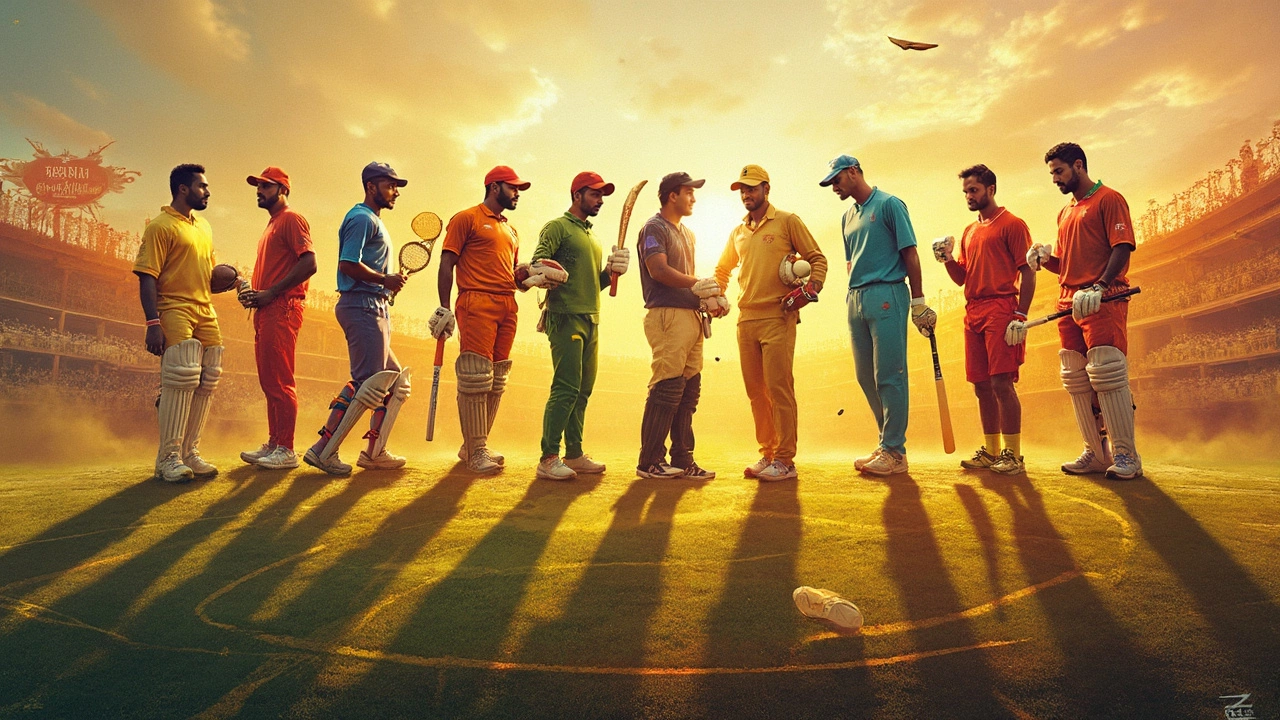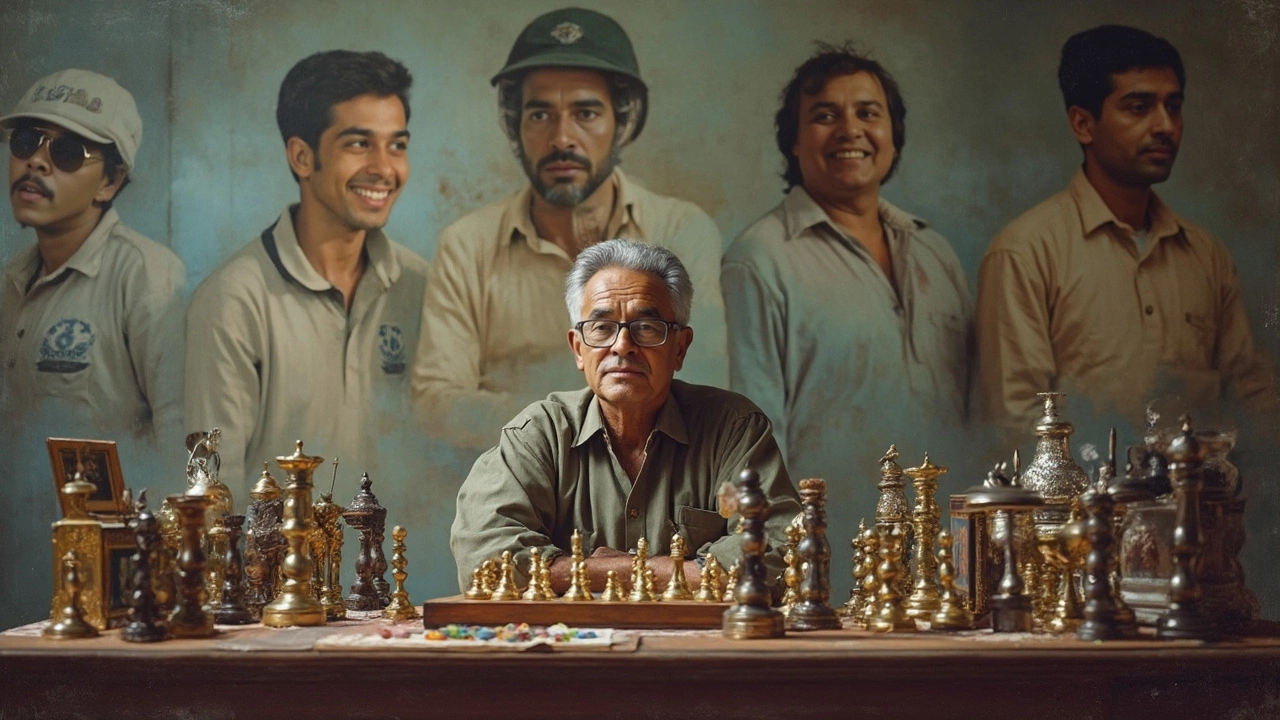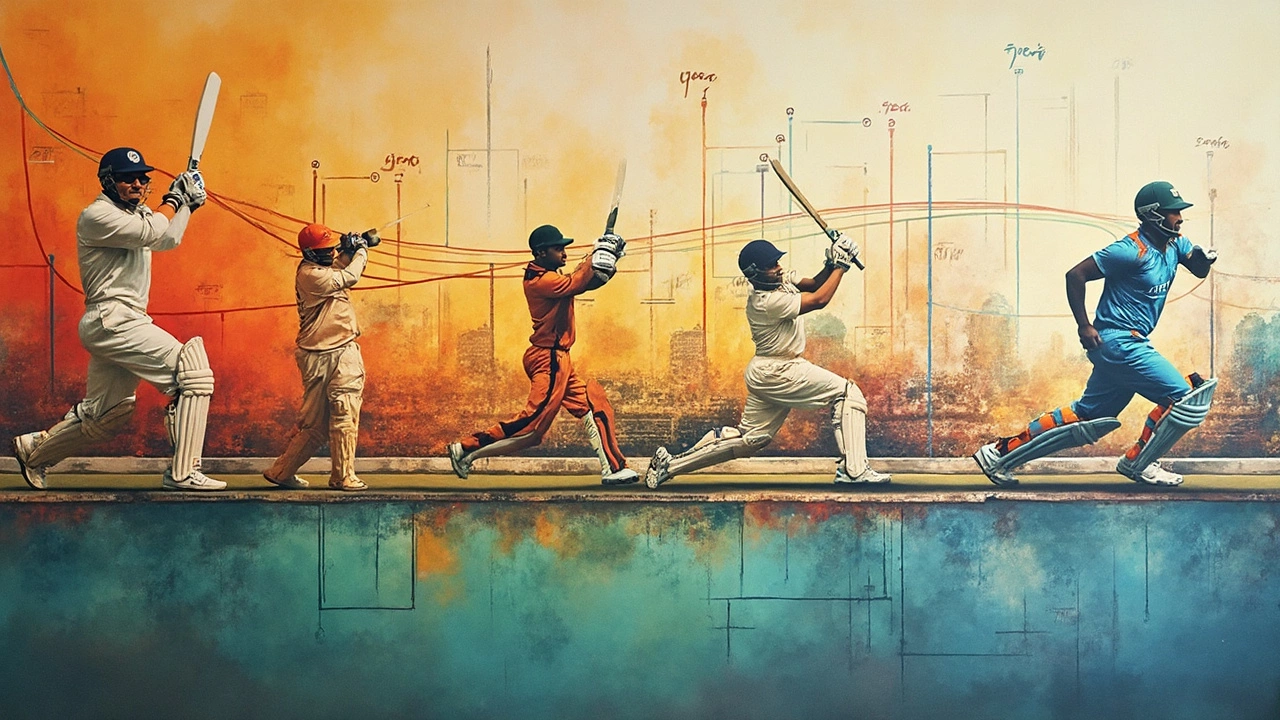Longest Sports Careers: Which Sport Lets Athletes Play the Longest?
 Jun, 26 2025
Jun, 26 2025
Tom Brady was still tossing touchdowns in his mid-40s, while gymnasts often retire before turning 25. There’s something fascinating about watching athletes keep going year after year when most others hang up their shoes. Some sports seem like a race against time with short, explosive careers. Others? Their legends stick around so long, it feels like they’re part of the furniture.
The Unique Formula Behind Long Sports Careers
It's not pure chance that some athletes stick around while others burn out fast. Several factors brew together to make career longevity possible, and each sport tweaks the recipe. The big ingredients? Physical demands, the risk of injury, the average age of entry and retirement, the amount of technical skill involved, and—no kidding—the money.
Think about golf. You won’t find Tiger Woods sprinting down a field or taking elbows to the face, but you will see him using skill, focus, and experience. That means fewer terrifying injuries and less wear and tear. In contrast, MMA fighters might have all the toughness in the world, but endless bruises take a toll—they’re lucky if their careers last into their late 30s.
Then there are sports with low entry ages—like gymnastics and figure skating—where physical peaks arrive early and fade quick. Their bodies do amazing things in their teens and early 20s, but that window slams shut just as quickly. Yet, in sports relying on accuracy, experience, or strategy (think shooting, bowling, sailing), you’ll spot gray-haired athletes still collecting trophies well into their 40s and 50s.
Motivation and paycheck also matter. Let’s be honest: if tennis or soccer stars are paid millions to continue, or if there’s a real shot at breaking records, the drive to keep training never fades. Medical science now helps, too. Surgeries, custom recovery plans, and advanced treatments can sometimes reset the clock a little, especially in leagues with massive budgets.
Sports Where Athletes Last the Longest
Let’s name names. Which arena lets you have the absolute longest professional run? The answer might surprise you—think outside the stadium!
Golf often leads the list, with pros regularly playing into their 50s (and sometimes beyond). Jack Nicklaus won the Masters at 46, and Phil Mickelson snagged the PGA Championship at 50—both stories people still bring up at the driving range. Experience trumps youth. There are senior tours for legends who want to keep cashing checks and wowing crowds.
Darts and snooker are far from the typical vision of pro sports, but the stats are wild. Phil Taylor, the king of darts, won world titles into his late 50s. Snooker legends Ronnie O’Sullivan and Steve Davis played at top-tier levels for decades. Here, steady nerves and practice matter more than raw athletic explosiveness.
Then, there’s baseball. Unlike the NFL, where bone-crunching hits shorten careers, baseball’s pacing is kind. Pitchers might peak early, but fielders, catchers, and especially designated hitters can last into their 40s. Julio Franco famously played until nearly 50 in the MLB.
Table tennis, archery, shooting, and bowling also feature tons of older professionals. Swedish table tennis legend Jan-Ove Waldner was a star past age 40. Olympic archers and shooters sometimes compete in their 50s and beyond. Lones Wigger, an American shooter, won world titles after the age of 50.
What about team sports? Soccer, basketball, and American football are tough—in fact, most stars retire before their mid-30s because the body simply can’t take the pounding. Goalkeepers can sometimes last longer (Gianluigi Buffon played top-level football until 45), and some basketball shooters (like Vince Carter) stuck around thanks to limited minutes and focused roles.
| Sport | Average Retirement Age | Famous Long Career Athletes |
|---|---|---|
| Golf | 45-50 | Jack Nicklaus, Phil Mickelson |
| Darts | 50-60 | Phil Taylor |
| Snooker | 50-60 | Steve Davis, Ronnie O’Sullivan |
| Baseball | 38-45 | Julio Franco, Nolan Ryan |
| Tennis | 34-38 | Serena Williams, Roger Federer |
| Football (Soccer) | 32-38 | Gianluigi Buffon, Zlatan Ibrahimović |
| MMA/Boxing | 34-38 | Bernard Hopkins, Randy Couture |
| Archery/Shooting | 40-60 | Lones Wigger, Kim Soo-Nyung |

The Human Side: What Helps Some Athletes Outlast the Rest?
Genes are part of the game, but habits and attitude run the show. Take LeBron James—his investment in body maintenance is legendary, with reports that he spends over a million dollars a year keeping his body right. Crisp practice routines, expert nutrition, sleep schedules, injury prevention, and (most underrated) the ability to adapt game style for each birthday—this separates the flash-in-the-pan talents from the grizzled vets who age like fine wine.
Many athletes say it’s the brain that matters most—the willpower to grind through training and rehab, the ice-cold nerves to step up in pressure situations, and the humility to change tactics as their bodies mature. Skill-based sports favor those who keep adjusting. Golfers perfect their swing and putt long after raw muscle fades. Table tennis stars tweak their grip or footwork to hang on.
Family and support networks keep the fire burning. Tiger Woods credits his dad for shaping his golf mind. Rafael Nadal owes much to his uncles and tight-knit crew. Longevity usually rides shotgun with the right mentors and loved ones.
The love for the game—the real, deep, everyday joy—carries pros through cold mornings, endless travel, and injuries. You can’t fake this, which is why the ones who love what they do are the last to leave the stage.
When Injury, Age, and Life Say Stop
Some careers end with a roar—think Peyton Manning winning a Super Bowl and walking away. Others fizzle out with a limp, after too many surgeries or declining results. Injury rates blow a hole in many career plans: NFL running backs rarely last past 30, while MLS soccer players are usually done before 36. The body says “enough,” and the smartest know when to listen.
But also, life gets busy. Kids, business interests, and new passions can call even the greatest names to step away. Michael Jordan famously left basketball for baseball and then came back—a move that worked only because his skills (and marketability) were just that rare.
For women, careers can be shorter, but not always—Serena Williams, Dara Torres, and Kim Rhode pushed the boundaries in tennis and shooting. Support for parent-athletes is slowly getting better, which could mean even longer careers for future legends.
Payouts matter too. In sports with weak pensions or low prize money, pros might retire earlier to chase regular work. In golf or tennis, multi-million dollar deals make sticking around easy and appealing.

Secrets for Lasting the Distance in Sports
Sure, superstars have elite genetics, but they’re not the only ones who can play the long game. Here are some not-so-obvious tips, drawn straight from the longest career athletes:
- Master your sport’s fundamentals—strong basics let you adapt when pure speed or strength dips.
- Invest in your body—don’t skimp on recovery, nutrition, or rest. Robbing the sleep bank always comes back to bite you.
- Keep learning—champions constantly watch tape, work with coaches, and try new tech. Boredom is the enemy.
- Call the shots—try switching roles or positions to fit what your body can handle. Goalkeepers, pitchers, and designated hitters find ways to last longer by adjusting how they play.
- Work on mental health—staying sharp, relaxed, and happy is a superpower.
- Balance life—family, hobbies, new challenges, and smart financial planning all help pro athletes avoid burnout.
- Don’t ignore new medical treatments—cutting-edge surgeries and therapies often give older athletes fresh life.
Every sport has its own timer, but with the right moves, you can keep hitting that snooze button and keep playing much longer than the next guy.
If you’re measuring the longest bounce of a sports career, steer clear from the collision-heavy turf. Aim for the green fairways, the quiet tension of the shooting range, or even the focused glare of a dartboard. The stage is wide open—choose right, train smart, and you just might see your name outlast them all in the record books.